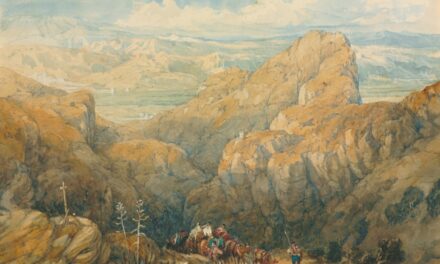Gabriel Metsu was born in 1629 in the vibrant city of Amsterdam, a hub of artistic innovation during the Dutch Golden Age. His early life was steeped in the rich cultural milieu of the Netherlands, where he was exposed to a variety of artistic influences. Metsu was the son of a painter, which undoubtedly played a significant role in shaping his artistic sensibilities.
His father, who was also named Gabriel Metsu, was a well-regarded artist in his own right, and it is likely that young Gabriel was introduced to the world of painting at an early age. This familial connection to art provided him with a foundation that would later inform his own unique style. As a young artist, Metsu was influenced by the works of his contemporaries, particularly the genre painters of the time.
The likes of Jan Vermeer and Frans Hals were pivotal in shaping his understanding of light, composition, and the portrayal of human emotion. The bustling streets of Amsterdam, filled with merchants, artisans, and everyday life, served as both inspiration and subject matter for his paintings. The city’s thriving art scene allowed him to interact with other artists and patrons, further enriching his artistic development.
It is within this context that Metsu began to hone his skills, developing a keen eye for detail and a deep appreciation for the subtleties of human interaction.
Summary
- Gabriel Metsu was born in Leiden, Netherlands in 1629 and was influenced by his father, a painter, and the work of Dutch Golden Age artists.
- Metsu’s artwork is characterized by his use of light and shadow, attention to detail, and his portrayal of domestic scenes and everyday life.
- Metsu’s career saw him rise to prominence in Amsterdam, where he became known for his genre paintings and portraits, gaining the patronage of wealthy clients.
- Notable works by Gabriel Metsu include “The Sick Child”, “The Duet”, and “The Letter Writer”, which showcase his skill in capturing intimate moments and emotions.
- Metsu’s contribution to the Dutch Golden Age art movement lies in his realistic and intimate portrayal of everyday life, adding depth and humanity to the genre painting tradition.
Style and Themes in Metsu’s Artwork
Metsu’s artistic style is characterised by its meticulous attention to detail and a profound understanding of light and shadow. His works often feature a rich colour palette that brings vibrancy to the scenes he depicts. Unlike some of his contemporaries who focused on grand historical or religious themes, Metsu found beauty in the mundane aspects of everyday life.
His paintings frequently showcase intimate domestic scenes, capturing moments of quiet reflection or interaction between figures. This focus on genre painting allowed him to explore themes of human emotion and social dynamics in a way that resonated deeply with viewers. The themes present in Metsu’s artwork often revolve around the complexities of human relationships and the subtleties of daily life.
He had an exceptional ability to convey narrative through visual means, inviting viewers to engage with the stories unfolding within his compositions. Whether it is a woman reading a letter or a couple sharing a moment of tenderness, Metsu’s works evoke a sense of intimacy that draws the observer into the scene.
The Rise to Prominence: Metsu’s Career
Metsu’s career began to flourish in the 1650s when he established himself as a prominent figure within the Amsterdam art scene. His early works garnered attention for their technical proficiency and engaging subject matter, leading to commissions from wealthy patrons who sought to adorn their homes with his art. As he gained recognition, Metsu became associated with the prestigious Guild of Saint Luke, which further solidified his status as a respected artist.
This affiliation not only provided him with valuable networking opportunities but also allowed him to showcase his work alongside other notable artists of the time. Throughout the 1660s and 1670s, Metsu’s reputation continued to grow, and he became known for his ability to capture the nuances of everyday life with remarkable skill. His paintings were sought after by collectors across Europe, and he enjoyed a successful career marked by numerous commissions and exhibitions.
However, despite his success, Metsu remained somewhat overshadowed by other artists of his era, such as Vermeer and Rembrandt. Nevertheless, his unique approach to genre painting and his ability to convey emotion through his work ensured that he carved out a distinct niche within the art world.
Notable Works by Gabriel Metsu
Among Metsu’s most celebrated works is “The Letter Reader,” painted around 1663-1665.
The painting depicts a young woman engrossed in reading a letter, her expression revealing a mix of curiosity and anticipation.
The warm tones and intricate details of her attire draw the viewer’s eye, while the soft light filtering through the window creates an intimate atmosphere that invites contemplation. Another notable work is “The Kitchen Maid,” created circa 1660. In this painting, Metsu captures a moment of domestic life as a maid prepares food in a humble kitchen setting.
The careful attention to detail in the rendering of textures—from the gleaming metal pots to the soft fabric of her clothing—demonstrates Metsu’s technical prowess. The scene is imbued with a sense of warmth and familiarity, reflecting the artist’s ability to elevate everyday moments into something truly special.
The Dutch Golden Age and Metsu’s Contribution
The Dutch Golden Age was a period marked by remarkable advancements in art, science, and commerce during the 17th century. It was an era characterised by an explosion of creativity, particularly in painting, where artists explored new techniques and subject matter. Gabriel Metsu emerged as a significant contributor to this vibrant artistic landscape, particularly within the genre painting movement that flourished during this time.
His works not only reflect the aesthetic values of the period but also provide insight into the social dynamics and cultural practices of Dutch society. Metsu’s contribution to the Dutch Golden Age lies not only in his technical skill but also in his ability to capture the essence of everyday life with sensitivity and depth. His paintings serve as historical documents that offer glimpses into domestic spaces, social interactions, and the lives of ordinary people during this transformative period.
By focusing on genre scenes rather than grand historical narratives, Metsu helped to elevate the status of everyday life as a legitimate subject for artistic exploration, paving the way for future generations of artists who would continue to delve into similar themes.
Metsu’s Portrayal of Everyday Life
One of the hallmarks of Gabriel Metsu’s work is his profound ability to portray everyday life with authenticity and emotional resonance. His paintings often depict intimate moments that resonate with viewers on a personal level—scenes that reflect shared human experiences such as love, longing, and domesticity. By focusing on these relatable themes, Metsu invites viewers to engage with his work not merely as observers but as participants in the narratives he presents.
In many of his paintings, such as “The Music Lesson” or “The Woman with a Pearl Necklace,” Metsu captures fleeting moments that evoke a sense of nostalgia and familiarity. The expressions on his subjects’ faces convey complex emotions that transcend time and place, allowing contemporary audiences to connect with the sentiments expressed in his work. This emphasis on human connection is what sets Metsu apart from many of his contemporaries; he had an innate ability to infuse his paintings with warmth and intimacy that resonates deeply with viewers.
Techniques and Materials Used by Metsu
Gabriel Metsu employed various techniques and materials that were characteristic of Dutch painters during the Golden Age. He primarily worked with oil paints on canvas, which allowed him to achieve remarkable depth and richness in colour. His meticulous layering technique involved applying thin glazes over underpaintings to create luminosity and texture—a method that enhanced the three-dimensional quality of his subjects.
Metsu’s attention to detail is evident in his brushwork; he often used fine brushes to render intricate elements such as lace or fabric folds with precision. This level of detail not only showcases his technical skill but also reflects his dedication to capturing reality as faithfully as possible. Additionally, he employed chiaroscuro—a technique that contrasts light and shadow—to create depth and drama within his compositions.
This mastery of light not only adds dimension but also serves to highlight key elements within each scene, guiding the viewer’s gaze through the narrative he constructs.
Legacy and Influence of Gabriel Metsu
Gabriel Metsu’s legacy is one that continues to resonate within the art world today. While he may not have achieved the same level of fame as some of his contemporaries during his lifetime, his contributions to genre painting have been increasingly recognised by art historians and collectors alike in recent years. His ability to capture the nuances of everyday life has inspired countless artists who seek to explore similar themes in their own work.
Metsu’s influence can be seen in various movements that followed him, particularly those that emphasised realism and emotional depth in art. His focus on domestic scenes paved the way for later artists who sought to depict ordinary life with authenticity and sensitivity. Furthermore, contemporary artists continue to draw inspiration from Metsu’s masterful use of light and composition, demonstrating that his impact on art extends far beyond his own time.
The Market for Metsu’s Artwork
The market for Gabriel Metsu’s artwork has experienced fluctuations over the centuries but has seen a resurgence in interest in recent years. As collectors increasingly seek out works from lesser-known artists of the Dutch Golden Age, Metsu’s paintings have gained recognition for their quality and historical significance. Auction houses have reported strong sales for his works, reflecting a growing appreciation for genre painting as an important aspect of art history.
Metsu’s paintings are now highly sought after by collectors who value not only their aesthetic appeal but also their cultural context within 17th-century Dutch society. As more exhibitions focus on genre painting and its role in reflecting social dynamics, interest in Metsu’s work continues to grow. This renewed market interest underscores the importance of preserving and promoting lesser-known artists whose contributions have shaped our understanding of art history.
Museums and Collections Featuring Metsu’s Work
Gabriel Metsu’s works can be found in several prestigious museums and collections around the world, showcasing his enduring legacy as an artist. Notable institutions such as the Rijksmuseum in Amsterdam hold significant pieces by Metsu, allowing visitors to appreciate his mastery firsthand. The museum’s collection includes iconic works like “The Letter Reader,” which exemplifies his skillful portrayal of intimate moments.
In addition to Dutch institutions, several international museums feature Metsu’s work within their collections. The National Gallery in London houses “The Music Lesson,” while other pieces can be found in collections across Europe and North America. These institutions play a crucial role in preserving Metsu’s legacy by providing public access to his art and facilitating scholarly research that deepens our understanding of his contributions.
Recognising Metsu’s Contribution to Art History
Recognising Gabriel Metsu’s contribution to art history involves acknowledging both his technical prowess and thematic depth within genre painting. While he may not have achieved widespread fame during his lifetime compared to some contemporaries, modern scholarship has illuminated his significance within the context of 17th-century Dutch art. His ability to capture everyday life with sensitivity has paved the way for future generations of artists who continue to explore similar themes.
Metsu’s work serves as an important reminder of the value found in ordinary moments—the beauty inherent in daily life that often goes unnoticed. By celebrating artists like Gabriel Metsu, we enrich our understanding not only of art history but also of human experience itself. His legacy endures through both his remarkable paintings and their continued relevance in contemporary discussions about art’s role in reflecting society’s complexities.
If you are interested in exploring different artistic techniques, you may also enjoy reading about a masterclass on layered colored pencil techniques for realistic blending. This article delves into the intricate process of blending colours with coloured pencils to create stunning and lifelike artwork. Just like Gabriel Metsu’s attention to detail and skillful use of light and shadow, this masterclass teaches artists how to achieve a similar level of realism in their work.



